Essential Math for Data Science: New Chapters
I’m glad to announce a few updates concerning my book Essential Math for Data Science.
First, I changed the structure of the book: a first chapter on basic algebra has been removed. Part of old chapter 02 has been merged in the linear algebra part.
I restructured the table of content: I removed some content about very basic math (like what is an equation or a function) to have more space to cover slighly more advanced contents. The part Statistics and Probability is now at the beginning of the book (just after a first part on Calculus). Have a look at the new TOC below to have more details.
There is now build hands-on projects for each chapter. Hands-on projects are sections where you can apply the math you just learned to a practical machine learning problem (like gradient descent or regularization, for instance). The difficulty of math and code in each of these hands-on project is variable, so you should find something at the right point of your learning curve.
Here is the table of content. Click on the chapters to see what’s inside.
Table of Content
- expand_more expand_less 01. How to use this Book
PART 1. Calculus
Machine learning and data science require some experience with calculus. You’ll be introduced here to derivatives and integrals and how they are useful in machine learning and data science.
- expand_more expand_less 02. Calculus: Derivatives and Integrals
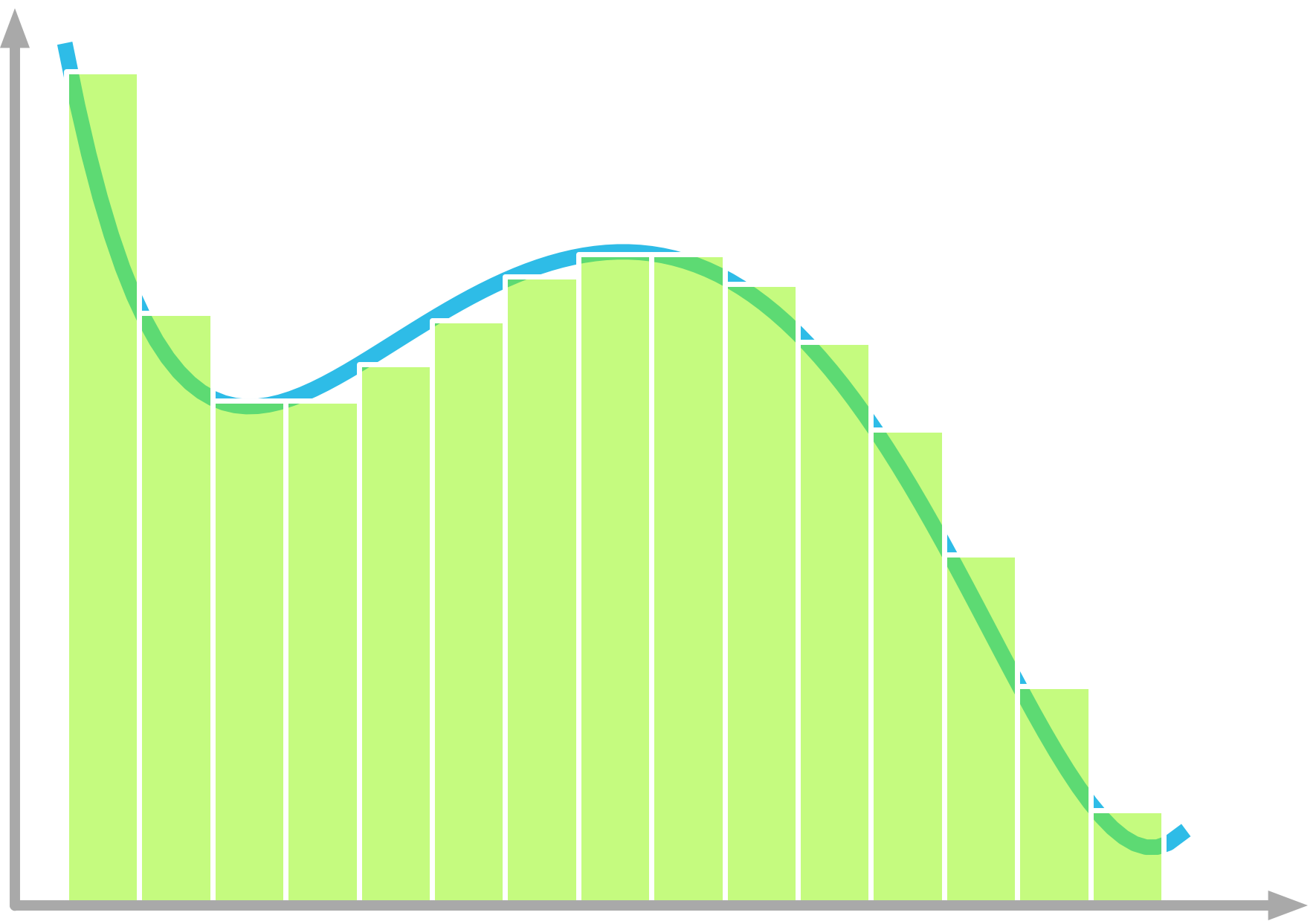 Area under the curve
Area under the curve- expand_more expand_less 2.1 Derivatives
2.1.1 Introduction
2.1.2 Mathematical Definition of Derivatives
2.1.3 Derivatives of Linear And Nonlinear Functions
2.1.4 Derivative Rules
2.1.5 Partial Derivatives And Gradients
- expand_more expand_less 2.2 Integrals And Area Under The Curve
2.2.1 Example
2.2.2 Riemann Sum
2.2.3 Mathematical Definition
- build2.3 Hands-On Project: Gradient Descent
2.3.1 Cost function
2.3.2 Derivative of the Cost Function
2.3.3 Implementing Gradient Descent
2.3.4 MSE Cost Function With Two Parameters
PART 2. Statistics and Probability
In machine learning and data science, probability and statistics are used to deal with uncertainty. This uncertainty comes from various sources, from data collection to the process you’re trying to model itself. This part will introduce you to descriptive statistics, probability distributions, bayesian statistics and information theory.
- expand_more expand_less 03. Statistics and Probability Theory
 Joint and Marginal Probability
Joint and Marginal Probability- expand_more expand_less 3.1 Descriptive Statistics
3.1.1 Variance and Standard Deviation
3.1.2 Covariance and Correlation
3.1.3 Covariance Matrix
- expand_more expand_less 3.2 Random Variables
3.2.1 Definitions and Notation
3.2.2 Discrete and Continuous Random Variables
- expand_more expand_less 3.3 Probability Distributions
3.3.1 Probability Mass Functions
3.3.2 Probability Density Functions
2.3.3 Implementing Gradient Descent
2.3.4 MSE Cost Function With Two Parameters
- expand_more expand_less 3.4 Joint, Marginal, and Conditional Probability
3.4.1 Joint Probability
3.4.2 Marginal Probability
3.4.3 Conditional Probability
- expand_more expand_less 3.5 Cumulative Distribution Functions
- expand_more expand_less 3.6 Expectation and Variance of Random Variables
3.6.1 Discrete Random Variables
3.6.2 Continuous Random Variables
3.6.3 Variance of Random Variables
- build3.7 Hands-On Project: The Central Limit Theorem
3.7.1 Continuous Distribution
3.7.2 Discrete Distribution
- expand_more expand_less 04. Common Probability Distributions
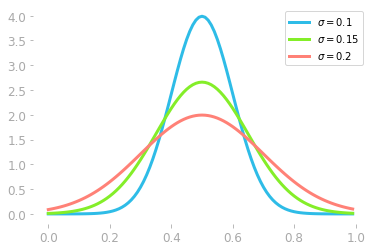 Gaussian Distributions
Gaussian Distributions- expand_more expand_less 4.1 Uniform Distribution
- expand_more expand_less 4.2 Gaussian distribution
4.2.1 Formula
4.2.2 Parameters
4.2.3 Requirements
- expand_more expand_less 4.3 Bernoulli Distribution
- expand_more expand_less 4.4 Binomial Distribution
4.4.1 Description
4.4.2 Graphical Representation
- expand_more expand_less 4.5 Poisson Distribution
4.5.1 Mathematical Definition
4.5.2 Example
- expand_more expand_less 4.6 Exponential Distribution
4.6.1 Derivation from the Poisson Distribution
4.6.2 Effect of λ
- build4.7 Hands-on Project: Waiting for the Bus
- expand_more expand_less 05. Bayesian Statistics and Information Theory
 Bayesian Inference
Bayesian Inference- expand_more expand_less 5.1 Bayes’ Theorem
5.1.1 Mathematical Formulation
5.1.2 Example
5.1.3 Bayesian Interpretation
5.1.4 Bayes’ Theorem with Distributions
- expand_more expand_less 5.2 Likelihood
5.2.1 Introduction and Notation
5.2.2 Finding the Parameters of the Distribution
5.2.3 Maximum Likelihood Estimation
- expand_more expand_less 5.3 Information Theory
5.3.1 Shannon Information
5.3.2 Entropy
5.3.3 Cross Entropy
5.3.4 Kullback-Leibler Divergence (KL Divergence)
- build5.4 Hands-On Project: Bayesian Inference
5.4.1 Advantages of Bayesian Inference
5.4.2 Project
PART 3. Linear Algebra
Linear algebra is the core of many machine learning algorithms. The great news is that you don’t need to be able to code these algorithms yourself. It is more likely that you’ll use a great Python library instead. However, to be able to choose the right model for the right job, or to debug a broken machine learning pipeline, it is crucial to have enough understanding of what’s under the hood. The goal of this part is to give you enough understanding and intuition about the major concepts of linear algebra used in machine and data science. It is designed to be accessible, even if you never studied linear algebra.
- expand_more expand_less 06. Scalars and Vectors
 L1 Regularization. Effect of Lambda.
L1 Regularization. Effect of Lambda.- expand_more expand_less 6.1 What Vectors are?
6.1.1 Geometric and Coordinate Vectors
6.1.2 Vector Spaces
6.1.3 Special Vectors
- expand_more expand_less 6.2 Operations and Manipulations on Vectors
6.2.1 Scalar Multiplication
6.2.2 Vector Addition
6.2.3 Transposition
- expand_more expand_less 6.3 Norms
6.3.1 Definitions
6.3.2 Common Vector Norms
6.3.3 Norm Representations
- expand_more expand_less 6.4 The Dot Product
6.4.1 Definition
6.4.2 Geometric interpretation: Projections
6.4.3 Properties
- build6.5 Hands-on Project: Regularization
6.5.1 Introduction
6.5.2 Effect of Regularization on Polynomial Regression
6.5.3 Differences between $L^1$ and $L^2$ Regularization
- expand_more expand_less 07. Matrices and Tensors
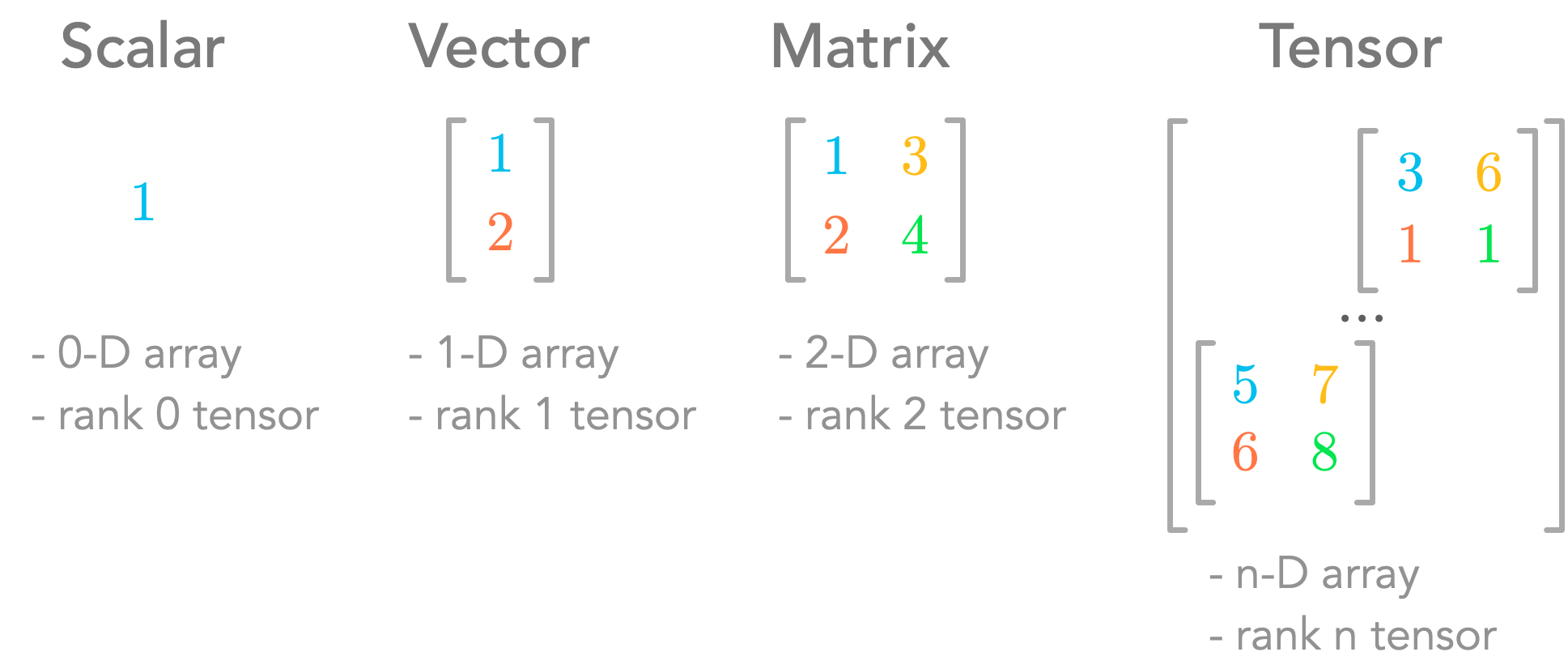 Scalars, vectors, matrices and tensors
Scalars, vectors, matrices and tensors- expand_more expand_less 7.1 Introduction
7.1.1 Matrix Notation
7.1.2 Shapes
7.1.3 Indexing
7.1.4 Main Diagonal
7.1.5 Tensors
7.1.6 Frobenius Norm
- expand_more expand_less 7.2 Operations and Manipulations on Matrices
7.2.1 Addition and Scalar Multiplication
7.2.2 Transposition
- expand_more expand_less 7.3 Matrix Product
7.3.1 Matrices with Vectors
7.3.2 Matrices Product
7.3.3 Transpose of a Matrix Product
- expand_more expand_less 7.4 Special Matrices
7.4.1 Square Matrices
7.4.2 Diagonal Matrices
7.4.3 Identity Matrices
7.4.4 Inverse Matrices
7.4.5 Orthogonal Matrices
7.4.6 Symmetric Matrices
7.4.7 Triangular Matrices
- build7.5 Hands-on Project: Image Classifier
7.5.1 Images as Multi-dimensional Arrays
7.5.2 Data Preparation
- expand_more expand_less 08. Span, Linear Dependency, and Space Transformation
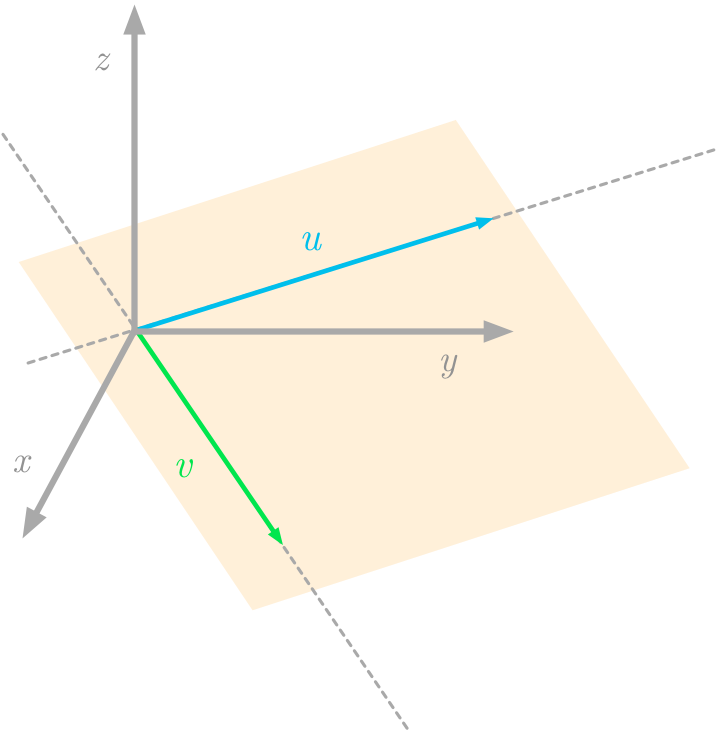 All linear Combinations of two vectors
All linear Combinations of two vectors- expand_more expand_less 8.1 Linear Transformations
8.1.1 Intuition
8.1.2 Linear Transformations as Vectors and Matrices
8.1.3 Geometric Interpretation
8.1.4 Special Cases
- expand_more expand_less 8.2 Linear combination
8.2.1 Intuition
8.2.2 All combinations of vectors
8.2.3 Span
- expand_more expand_less 8.3 Subspaces
8.3.1 Definitions
8.3.2 Subspaces of a Matrix
- expand_more expand_less 8.4 Linear dependency
8.4.1 Geometric Interpretation
8.4.2 Matrix View
- expand_more expand_less 8.5 Basis
8.5.1 Definitions
8.5.2 Linear Combination of Basis Vectors
8.5.3 Other Bases
- expand_more expand_less 8.6 Special Characteristics
8.6.1 Rank
8.6.2 Trace
8.6.3 Determinant
- build8.7 Hands-On Project: Span
- expand_more expand_less 09. Systems of Linear Equations
 Projection of a vector onto a plane
Projection of a vector onto a plane- expand_more expand_less 9.1 System of linear equations
9.1.1 Row Picture
9.1.2 Column Picture
9.1.3 Number of Solutions
9.1.4 Representation of Linear Equations With Matrices
- expand_more expand_less 9.2 System Shape
9.2.1 Overdetermined Systems of Equations
9.2.2 Underdetermined Systems of Equations
- expand_more expand_less 9.3 Projections
9.3.1 Solving Systems of Equations
9.3.2 Projections to Approximate Unsolvable Systems
9.3.3 Projections Onto a Line
9.3.4 Projections Onto a Plane
- build9.4 Hands-on Project: Linear Regression Using Least Approximation
9.4.1 Linear Regression Using the Normal Equation
9.4.2 Relationship Between Least Squares and the Normal Equation
- expand_more expand_less 10. Eigenvectors and Eigenvalues
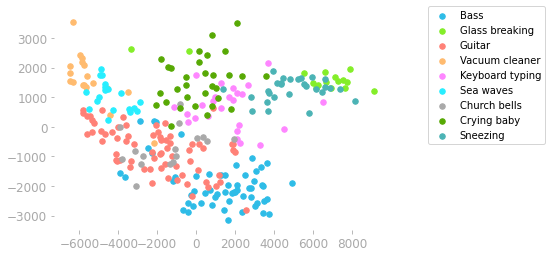 Principal Component Analysis on audio samples.
Principal Component Analysis on audio samples.- expand_more expand_less 10.1 Eigenvectors and Linear Transformations
- expand_more expand_less 10.2 Change of Basis
10.2.1 Linear Combinations of the Basis Vectors
10.2.2 The Change of Basis Matrix
10.2.3 Example: Changing the Basis of a Vector
- expand_more expand_less 10.3 Linear Transformations in Different Bases
10.3.1 Transformation Matrix
10.3.2 Transformation Matrix in Another Basis
10.3.3 Interpretation
- expand_more expand_less 10.4 Eigendecomposition
10.4.1 First Step: Change of Basis
10.4.2 Eigenvectors and Eigenvalues
10.4.3 Diagonalization
10.4.4 Eigendecomposition of Symmetric Matrices
- build10.5 Hands-On Project: Principal Component Analysis
10.5.1 Under the Hood
10.5.2 Making Sense of Audio
- expand_more expand_less 11. Singular Value Decomposition
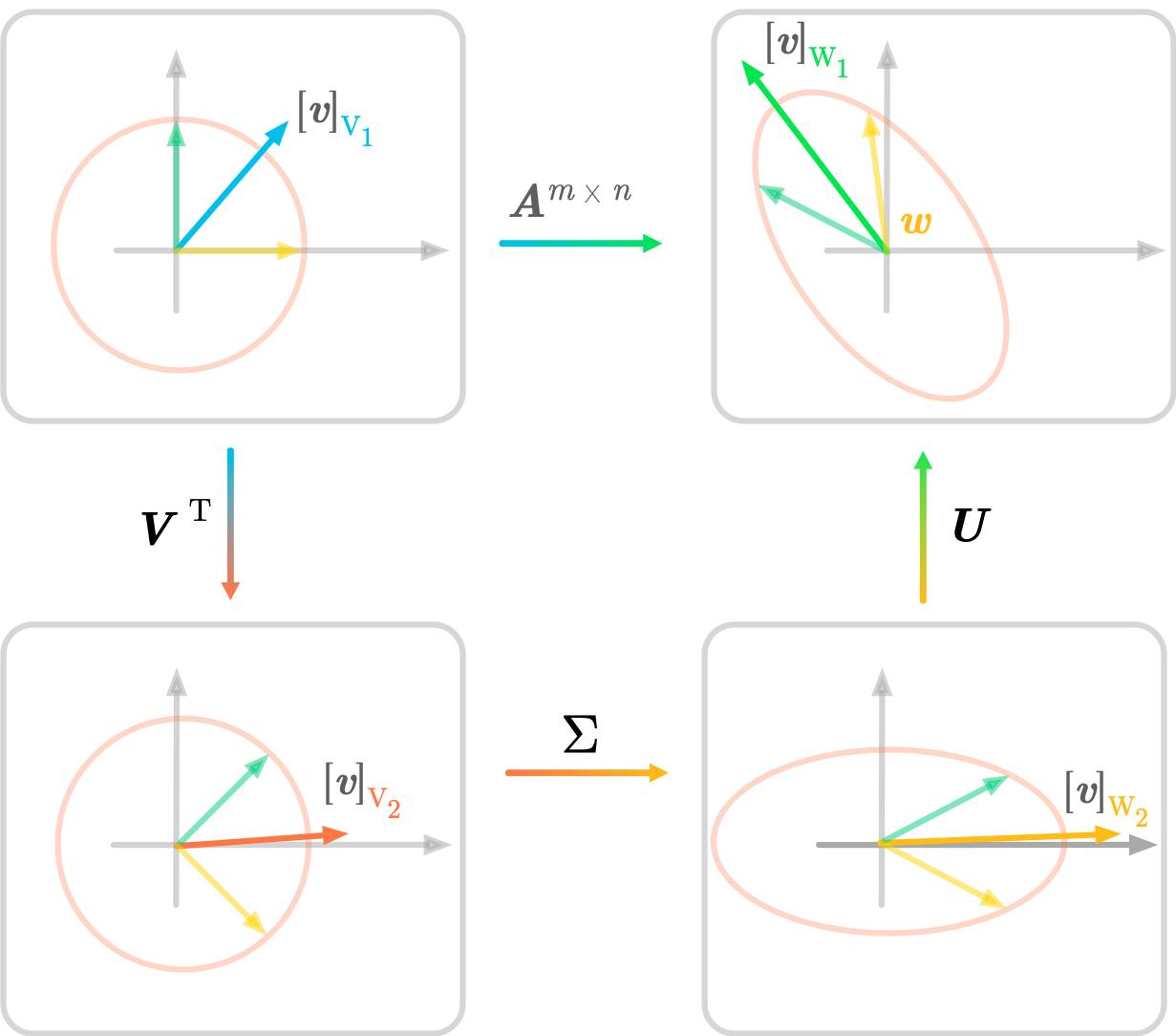 SVD Geometry
SVD Geometry- expand_more expand_less 11.1 Nonsquare Matrices
11.1.1 Different Input and Output Spaces
11.1.2 Specifying the Bases
11.1.3 Eigendecomposition is Only for Square Matrices
- expand_more expand_less 11.2 Expression of the SVD
11.2.1 From Eigendecomposition to SVD
11.2.2 Singular Vectors and Singular Values
11.2.3 Finding the Singular Vectors and the Singular Values
11.2.4 Summary
- expand_more expand_less 11.3 Geometry of the SVD
11.3.1 Two-Dimensional Example
11.3.2 Comparison with Eigendecomposition
11.3.3 Three-Dimensional Example
11.3.4 Summary
- expand_more expand_less 11.4 Low-Rank Matrix Approximation
11.4.1 Full SVD, Thin SVD and Truncated SVD
11.4.2 Decomposition into Rank One Matrices
- build build 11.5 Hands-On Project: Image Compression
I hope that you’ll find this content useful! Feel free to contact me if you have any question, request, or feedback!
